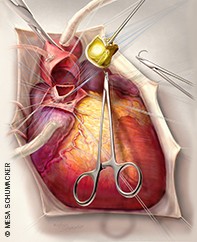Peer Reviewed
Feature Article Cardiovascular medicine
Diagnosing and managing common adult valvular heart diseases
Abstract
Generally, patients with valvular heart disease can be monitored clinically and with cardiac imaging until symptoms or ventricular enlargement or dysfunction appear. Optimal timing of valve surgery or intervention remains a crucial determinant of patient outcome.
Key Points
- Transthoracic echocardiography is the imaging modality of choice for diagnosis and follow up of patients with valvular heart diseases.
- Exercise testing has a role in evaluating apparently asymptomatic patients with valvular heart disease to identify whether they are truly asymptomatic.
- Transcatheter aortic valve implantation has emerged as an alternative treatment to valve replacement by open heart surgery for the management of aortic stenosis in patients with a prohibitive surgical risk.
- Anticoagulation for atrial fibrillation in those with concomitant valve disease (including valve replacement) is currently limited to warfarin.
Picture credit: © Mesa Schumacher
Purchase the PDF version of this article
Already a subscriber? Login here.

